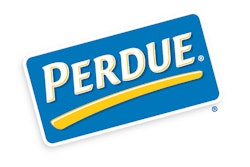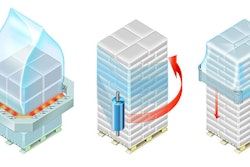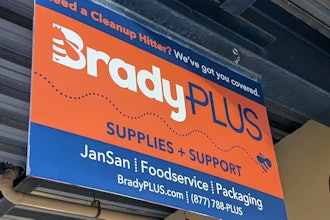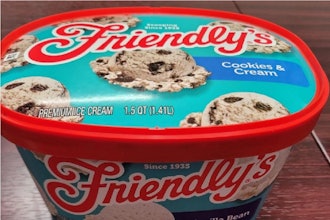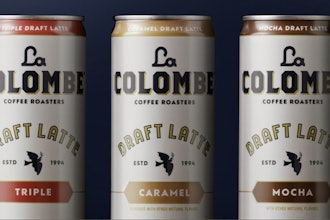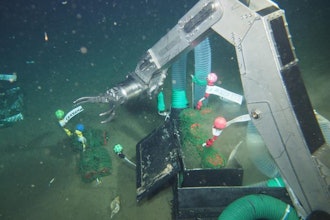For decades, glass packaging has been the container of choice for a wide range of food products. In recent years, driven by demand from consumers and retailers to reduce weight and eliminate glass breakage, many brand owners began switching their food products from glass to PET (polyethylene terephthalate) packaging. Manufacturers of hot-filled products such as pasta sauces and salsa and products subject to pasteurization such as pickles felt that pressure as the industry made the glass-to-PET shift. But they felt compelled to continue to package their products in glass containers sealed with metal lug closures.
The reasons? Bottle and closure manufacturers were struggling to meet the multiple challenges involved in converting glass packaging to PET and still having it sealed with a metal closure. And brand owners were reluctant to make a change so dramatic that it would require a large investment in changing their filling/capping line equipment. But the significant benefits offered by changing to PET kept bottle manufacturers working closely with closure manufacturers to meet these challenges.
Glass packaging offers certain intrinsic advantages over PET, such as rigidity and resistance to neck deformation during capping after high-heat operations like hot filling and before pasteurization. At the same time, glass also has limitations, including higher weight that raises logistics costs and susceptibility to breakage that can disrupt production line operations and create cleanup challenges for retailers.
The critical challenge for closure manufacturers was to find a metal closure that could seal the PET container securely without deforming the heated and softened neck finish. A tight seal would let brands provide the vacuum safety button that consumers preferred. For brand owners, it was also essential that any new container/closure combination maintain the same configuration that would allow it to be filled and capped on existing production equipment.
Silgan Closures, a leading manufacturer of metal closures for glass packaging for a wide variety of food and beverage products, worked closely with leading PET container manufacturers to develop new metal lug closure designs to meet all of these challenges. The new closure design incorporating more and longer lugs is now patented and packages using it will soon be appearing on store shelves. A second patented design involves a closure with the new raised radius feature.
About the author
William Makely has been a professional writer since 1985. He has written and published more than 700 articles about packaging materials and machinery.
The new closures
Metal lug closures used with glass containers have traditionally used four lugs to connect the closure to the container neck and create a tight seal with flexible material within the closure. While this works successfully on rigid glass containers, the material of a thermoformed PET container can become softened during the fill operation and, since the four-lug closure exerts pressure at four widely separate points, it can deform the neck, preventing a complete seal.
The new closure is designed to redistribute the pressure exerted on the neck of the PET container by increasing the number of lugs to at least five and increasing the length of each lug. This increases the closure’s physical contact with the neck by approximately 72%, which results in a more consistent pressure around the perimeter, preventing the neck from being deformed by unequal pressure.
Because the seal is now complete, the closure can incorporate a safety seal button that warns consumers when the seal has been broken. This is a critical package element for many consumers, and one long associated with the security of glass packaging.
The second new closure feature is a stepped radius design that stabilizes the container neck during exposure to heat from processes like pasteurization, where applicable. PET containers have a thinner wall dimension than glass ones. In a traditional metal lug closure design, the channel in the closure into which the neck fits during sealing is larger than the PET neck thickness, and allows the neck to flex as a result of pressure. Silgan’s new design matches the width of the closure channel to the size of the PET neck, preventing flexing.
In the traditional lug closure, that channel is at the perimeter of the closure, where the skirt begins. In the new Silgan Closures stepped design, beyond the new, thinner channel the closure top steps down to form the rounded skirt that contains the larger lugs. As the closure is applied, the neck is forced into the channel, which is lined with Silgan Closures’ proprietary Plastisol compound, which engages it and provides additional lateral stability, further preventing the neck from distorting as the closure is tightened.
As a result of these design changes, Silgan Closures now offers brand owners multiple closure choices: the traditional four-lug closure for use with glass, a closure with the traditional lug closure shape but more and larger lugs for use with PET, and the stepped closure design, also for use with PET, that includes the longer lugs. New designs are available in 63, 70 and 82 millimeter sizes.
All of these closures meet one of the major requirements of packagers: they can be applied with existing capping equipment. Plus, Silgan is absorbing the capital investment for tooling on these closures to keep those costs from impacting brand owners.
Working with PET container manufacturers
Three major PET container manufacturers –– Amcor Rigid Plastics, Graham Packaging Company and Plastipak Packaging –– have each developed new PET food containers that meet the technical challenges presented by replacing glass jars with PET, including withstanding the high temperatures of hot filling, which can reach temperatures of 205 F, at which point PET softens.
While each company developed its own unique material formulation and unique container design to strengthen the material and the rigidity of the container, all still faced the same closure dilemma. More heat-resistant formulations and stronger PET container designs still faced the extreme stresses that were applied by existing lug closures.
Consequently, each of these manufacturers independently worked closely with Silgan Closures’ engineers and designers as they developed the new closures, and each has incorporated or is in the process of incorporating a version of the new closure into its PET packaging.
As these products reach retail shelves, sales confirming early focus group tests that showed consumer acceptance will likely lead more brand owners to be comfortable with changing their packaging to PET.
About Silgan Closures
Silgan Closures is a leading supplier of metal, plastic and composite closure systems for food and beverage products in North and South America. Its headquarters and innovation center are located in Downers Grove, Illinois and it operates manufacturing plants in Arizona, Georgia, Illinois, Indiana and Pennsylvania. For more information about Silgan Closures and its products, contact Marketing Manager [email protected] or visit the company web site at www.silganclosures.com.






